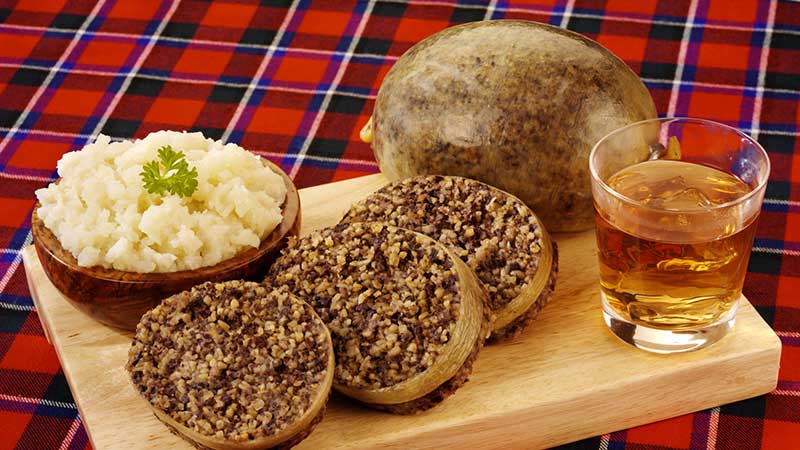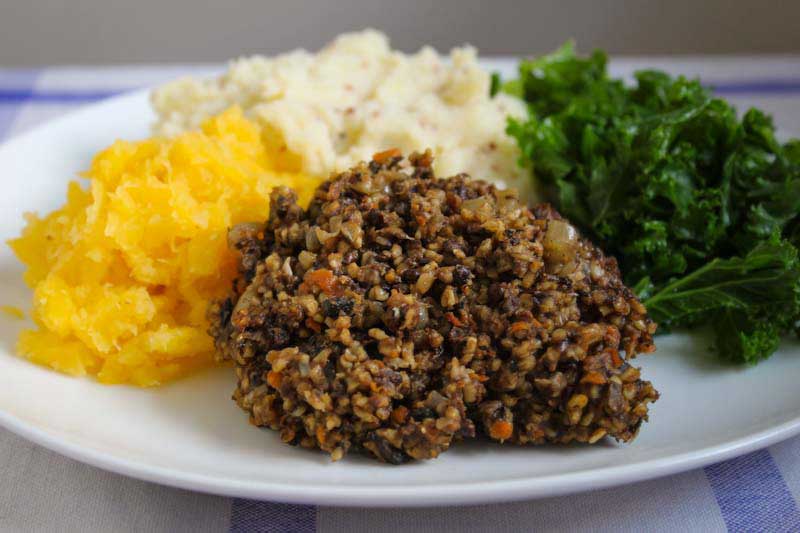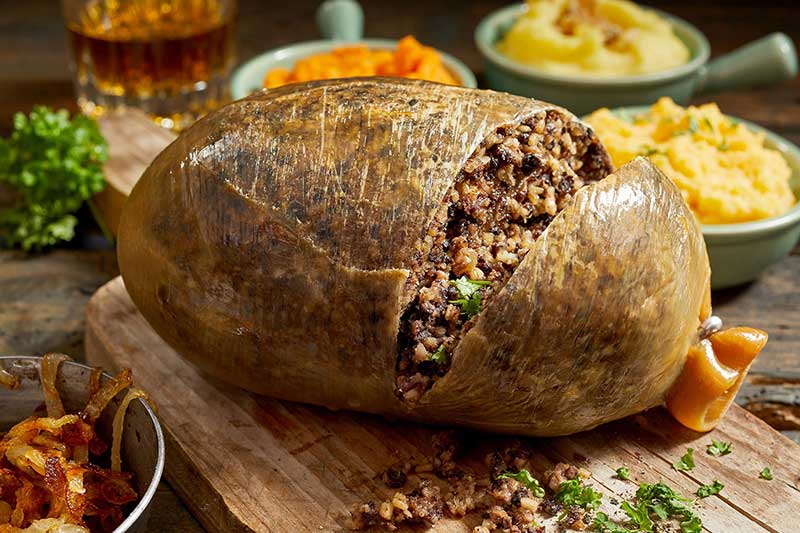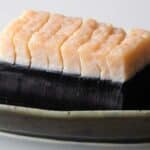Introduction
Haggis, a beloved Scottish dish, has captured the hearts and taste buds of people worldwide. With its unique blend of flavors and historical significance, haggis is more than just a meal; it’s a symbol of Scotland’s cultural identity.The Origins of Haggis
Tracing back its roots, haggis can be linked to the ancient Scots and their resourceful approach to using every part of the animal. The dish’s history dates back to as early as the 15th century, where it was born out of necessity and practicality.Ingredients and Preparation
Haggis is traditionally prepared using sheep’s offal, including the heart, liver, and lungs, mixed with oats, suet, and seasonings. These ingredients are combined, stuffed into a sheep’s stomach (nowadays, a synthetic casing is often used), and simmered to perfection.
Haggis Traditions and Celebrations
Haggis holds a special place in Scottish celebrations, most notably on Burns Night, an annual event dedicated to the renowned poet Robert Burns. During the festivities, haggis is ceremoniously brought to the table accompanied by bagpipes, and the “Address to a Haggis” is recited before indulging.Haggis in Modern Cuisine
While haggis has deep historical roots, it has also evolved with the times. Modern chefs have taken this traditional dish and added contemporary twists, incorporating diverse flavors and presentations that appeal to a broader audience.Health and Nutritional Aspects
Despite its indulgent reputation, haggis can provide nutritional benefits. Sheep’s offal offers essential nutrients, and the oats provide a hearty source of energy. However, moderation is key due to its higher fat and calorie content.Cultural Significance of Haggis
Haggis is more than a dish; it represents Scottish pride and heritage. Its enduring presence in Scottish culture symbolizes resilience, resourcefulness, and the importance of preserving traditions.
Myths and Misconceptions
Over the years, several myths and misconceptions have surrounded haggis. One common myth is that haggis is a wild animal hunted in the Scottish Highlands, which, of course, is far from accurate.The Global Spread of Haggis
With the Scottish diaspora, haggis has traveled far beyond its homeland. Scottish communities around the world celebrate their heritage by preparing and enjoying this iconic dish.Challenges and Controversies
The traditional preparation of haggis using sheep’s lungs has led to restrictions in some countries due to health regulations. This has sparked debates about how to maintain authenticity while adhering to modern food safety standards.The Art of Cooking Haggis
Cooking haggis requires skill to achieve the perfect balance of flavors and textures. The slow simmering process allows the ingredients to meld harmoniously, resulting in a dish that’s rich and savory.Taste the Timeless: Traditional French Desserts
Variations of Haggis
As haggis gained popularity, creative adaptations emerged. Vegetarian haggis, made with pulses, nuts, and vegetables, caters to those with dietary restrictions while still capturing the essence of the original.Serving and Pairing
Haggis is often served with neeps and tatties, which are turnips and mashed potatoes, respectively. The dish’s hearty nature pairs well with robust Scottish ales or a fine whisky.Preserving Haggis Traditions
Efforts to preserve haggis traditions include educational initiatives and food festivals that celebrate its history. By passing down knowledge and recipes, the legacy of haggis continues to thrive.Conclusion
In the grand tapestry of culinary history, haggis stands as a testament to the ingenuity and traditions of Scotland. From its humble beginnings to its global presence, this iconic dish encapsulates the essence of a nation’s identity and the enduring power of cultural heritage.What Are the Traditional Ingredients of Muktuk Delicacy?
Exploring the traditional delicacy muktuk reveals its key ingredients the outer skin and blubber of the bowhead whale. This Alaskan Eskimo delicacy is rich in vitamin C and omega-3 fatty acids. Muktuk’s unique flavor and chewy texture make it a cultural culinary delight.
IntroductionThe Origins of HaggisIngredients and PreparationHaggis Traditions and CelebrationsHaggis in Modern CuisineHealth and Nutritional AspectsCultural Significance of HaggisMyths and MisconceptionsThe Global Spread of HaggisChallenges and ControversiesThe Art of Cooking HaggisVariations of HaggisServing and PairingPreserving Haggis TraditionsConclusionWhat Are the Traditional Ingredients of Muktuk Delicacy?FAQs (Frequently Asked Questions)Is haggis only eaten in Scotland?What does haggis taste like?Can I make vegetarian haggis at home?Why is haggis associated with Burns Night?Is haggis difficult to prepare?





